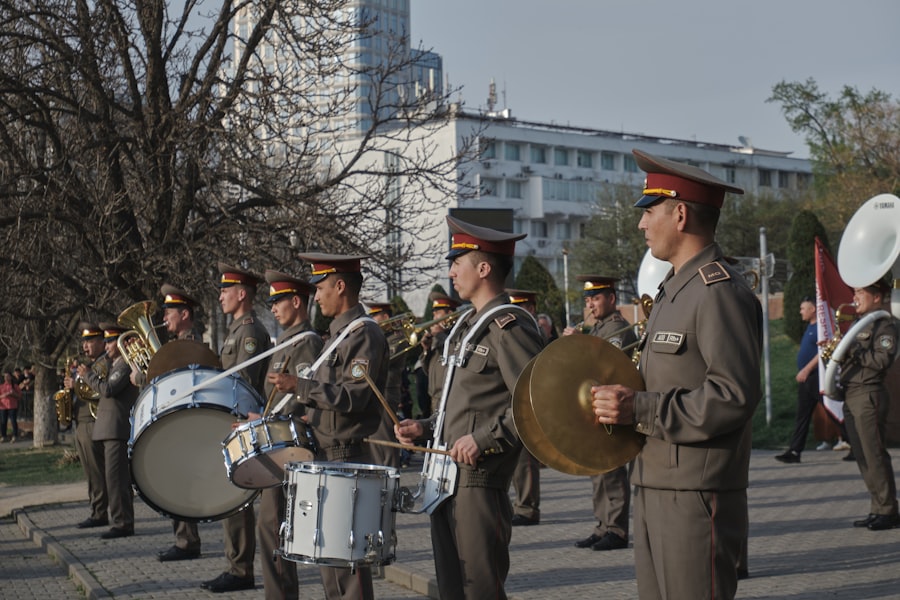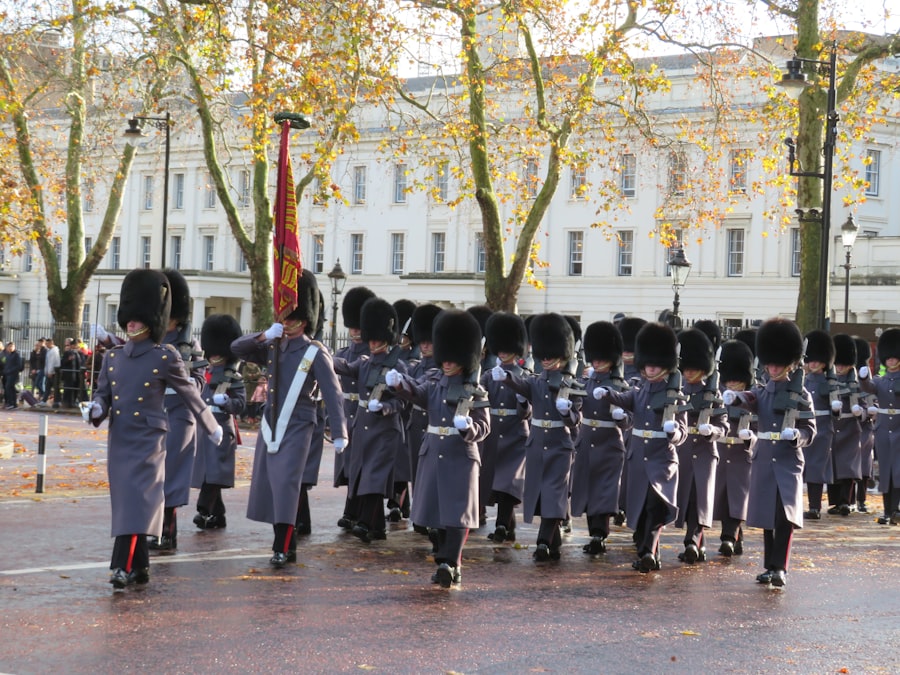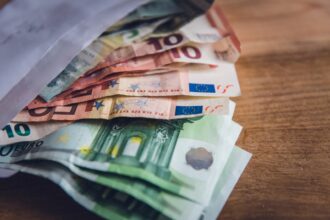The history of military parades in Russia is a rich tapestry woven through centuries of tradition, conflict, and national pride. The origins of these grand displays can be traced back to the early 18th century during the reign of Peter the Great, who sought to modernize the Russian military and instill a sense of discipline and order. The first formal military parade is often credited to Peter, who organized a display of troops in 1700 to celebrate a victory in the Great Northern War.
This event marked the beginning of a tradition that would evolve over the years, reflecting the changing political landscape and military prowess of Russia. As the years progressed, military parades became more elaborate and symbolic. The 19th century saw the establishment of annual parades in St.
Petersburg, showcasing the might of the Russian Empire. These events were not merely displays of military strength; they were also opportunities for the monarchy to reinforce its authority and connect with the populace. The parades served as a reminder of the empire’s power and unity, especially during times of war or national crisis.
The significance of these events grew, culminating in the grand parades held after major victories, such as the defeat of Napoleon in 1812, which solidified their place in Russian culture.
Key Takeaways
- Russian military parades have a long history dating back to the time of the Russian Empire, with the first official parade taking place in 1702.
- Military parades hold significant cultural importance in Russia, symbolizing national pride, strength, and unity.
- Over the years, Russian military parades have evolved in terms of scale, technology, and political messaging, reflecting the country’s changing military capabilities and priorities.
- Russian military parades are used as a tool for propaganda, projecting power and instilling patriotism among the population.
- Russian military parades prominently feature the display of advanced military technology, showcasing the country’s military prowess to both domestic and international audiences.
The Significance of Military Parades in Russian Culture
Military parades hold a profound significance in Russian culture, serving as a powerful symbol of national pride and resilience. They are not merely ceremonial events; they embody the collective memory of the nation, commemorating sacrifices made during conflicts and celebrating victories that have shaped Russia’s identity. For many Russians, these parades evoke a sense of unity and patriotism, reminding them of their shared history and the struggles endured by previous generations.
Moreover, military parades are deeply intertwined with Russian folklore and tradition. They often feature elements that resonate with the public’s understanding of heroism and sacrifice. The annual Victory Day parade on May 9th, commemorating the Soviet Union’s triumph over Nazi Germany in World War II, is particularly significant.
It serves as a poignant reminder of the Great Patriotic War, during which millions lost their lives. The emotional weight of this event is palpable, as veterans march alongside modern soldiers, bridging the gap between past and present. This connection reinforces a sense of continuity in Russian culture, where history is not just remembered but actively celebrated.
The Evolution of Russian Military Parades

Over the decades, Russian military parades have undergone significant transformations, adapting to the changing political climate and technological advancements. Initially characterized by their simplicity and focus on troop formations, these parades have evolved into grand spectacles featuring advanced military hardware and intricate choreography. The Soviet era marked a turning point in this evolution, as parades became more elaborate and theatrical, showcasing not only military might but also the ideological underpinnings of communism.
The post-Soviet period brought about further changes as Russia sought to redefine its national identity. While some elements of Soviet-era parades remained, there was a noticeable shift towards emphasizing patriotism and national sovereignty rather than communist ideology. The introduction of new technologies and weaponry into these displays reflected Russia’s aspirations as a global power.
Modern parades now feature advanced tanks, missile systems, and aerial displays that highlight Russia’s military capabilities on an international stage. This evolution signifies not only a change in military strategy but also a broader narrative about Russia’s place in the world.
The Role of Military Parades in Russian Propaganda
| Year | Location | Participants | Viewer Count |
|---|---|---|---|
| 2018 | Moscow | 12,000 | Over 12 million |
| 2019 | St. Petersburg | 15,000 | Around 10 million |
| 2020 | Moscow | 10,000 | Not available |
Military parades serve as potent tools for propaganda in Russia, allowing the government to project strength and unity both domestically and internationally. These events are meticulously orchestrated to convey specific messages about national pride, military readiness, and political stability. By showcasing advanced weaponry and disciplined troops, the state reinforces its image as a formidable power capable of defending its interests against perceived threats.
The timing and content of these parades are often strategically chosen to coincide with significant political events or anniversaries. For instance, the Victory Day parade not only commemorates historical achievements but also serves as a platform for contemporary political narratives. Leaders use these occasions to rally public support and bolster their legitimacy by associating themselves with national pride and historical victories.
This intertwining of military displays with political messaging underscores the importance of parades as instruments of statecraft in Russia.
The Display of Military Technology in Russian Parades
One of the most striking features of Russian military parades is the emphasis on showcasing cutting-edge military technology. These events provide an opportunity for the Russian government to demonstrate its advancements in defense capabilities, often unveiling new weapon systems and military hardware to both domestic audiences and international observers. The inclusion of advanced tanks, missile systems, and aircraft not only highlights Russia’s technological prowess but also serves as a deterrent to potential adversaries.
The display of military technology during parades is carefully curated to evoke awe and admiration among spectators. Each year, new innovations are introduced, reflecting ongoing investments in research and development within the defense sector. This focus on technological advancement is not merely for show; it is part of a broader strategy to position Russia as a leader in global military capabilities.
By showcasing its arsenal during these high-profile events, Russia aims to assert its influence on the world stage while reinforcing national pride among its citizens.
The Involvement of Russian Armed Forces in Military Parades

The involvement of the Russian Armed Forces in military parades is a testament to their integral role in national identity and pride. Soldiers from various branches participate in these events, showcasing their discipline, training, and commitment to service. The presence of veterans alongside active-duty personnel adds an emotional dimension to the parades, symbolizing continuity and respect for those who have served before.
Participation in military parades is often seen as an honor for soldiers, reflecting their dedication to protecting the nation. Rigorous training precedes these events, ensuring that troops perform flawlessly during the displays. This level of preparation underscores the importance placed on these parades within the military hierarchy.
The Political Message Behind Russian Military Parades
Russian military parades are laden with political messages that extend beyond mere displays of military might. They serve as platforms for leaders to communicate their vision for the country while reinforcing narratives about national security and sovereignty. The carefully choreographed nature of these events allows for a controlled presentation that aligns with governmental objectives.
The political undertones are particularly evident during significant anniversaries or geopolitical tensions. For instance, during times of international conflict or diplomatic strain, parades may take on a more aggressive tone, emphasizing readiness to defend national interests. Leaders often use these occasions to rally public support by framing military strength as essential for maintaining peace and stability.
This strategic use of parades highlights their role as instruments for shaping public perception and reinforcing governmental authority.
The International Response to Russian Military Parades
The international response to Russian military parades has been mixed, often reflecting broader geopolitical tensions.
The reactions can vary significantly depending on current diplomatic relations and historical contexts.
Western nations have frequently criticized Russian military parades as provocative displays intended to intimidate neighboring countries or assert dominance on the global stage. In contrast, some countries with closer ties to Russia may view these events more favorably, seeing them as legitimate expressions of national identity. This divergence in perspectives underscores the complex interplay between national pride and international relations, where military parades become focal points for broader discussions about security and diplomacy.
The Impact of Russian Military Parades on National Identity
Russian military parades play a crucial role in shaping national identity by fostering a sense of unity and collective memory among citizens. These events serve as reminders of historical struggles and triumphs that have defined Russia’s character over time. For many Russians, participating in or witnessing these parades reinforces their connection to a shared past marked by resilience and sacrifice.
The emotional resonance of military parades extends beyond mere nostalgia; they actively contribute to contemporary notions of patriotism and civic duty. As citizens gather to celebrate their nation’s achievements, they are reminded of their responsibilities toward their country and fellow citizens. This sense of belonging is particularly pronounced during significant anniversaries like Victory Day when collective remembrance becomes intertwined with national pride.
The Controversies Surrounding Russian Military Parades
Despite their significance, Russian military parades are not without controversy. Critics argue that these events can perpetuate militarism and glorify war at a time when diplomatic solutions are increasingly necessary. Some view them as extravagant displays that divert resources away from pressing social issues such as healthcare or education.
This criticism raises important questions about priorities within Russian society and governance. Additionally, there are concerns regarding how these parades may exacerbate tensions with neighboring countries or contribute to an atmosphere of hostility on the global stage. As Russia showcases its military capabilities amid ongoing geopolitical conflicts, some observers worry that such displays could provoke unnecessary escalation or misunderstandings between nations.
These controversies highlight the complex relationship between national pride, militarism, and international diplomacy.
The Future of Russian Military Parades
Looking ahead, the future of Russian military parades remains uncertain yet intriguing. As global dynamics continue to shift, these events may evolve further in response to changing political landscapes both domestically and internationally. While they will likely remain integral to Russia’s national identity, there may be calls for greater inclusivity or alternative forms of commemoration that reflect diverse perspectives within society.
Moreover, advancements in technology could reshape how these parades are conducted and perceived. Virtual reality experiences or digital displays may complement traditional formats, allowing for broader participation while maintaining the spectacle associated with military displays. Ultimately, while Russian military parades will continue to serve as symbols of national pride and resilience, their future will depend on how they adapt to an ever-changing world marked by new challenges and opportunities for dialogue.
In the article “The Truth About Russian Military Parades,” the intricate details and historical significance of these grand displays are explored, shedding light on their role in showcasing military might and national pride. For a deeper understanding of the strategic and political implications of such events, you might find the related article on In The War Room insightful. This piece delves into the broader context of military parades and their impact on international relations, providing a comprehensive analysis that complements the discussion on Russian military traditions.
WATCH NOW! 🎖️ Plot Twist: Russia’s Military Is Being Eaten Alive By Its Own Corruption
FAQs
What is a Russian military parade?
A Russian military parade is a ceremonial event where the country’s armed forces display their military capabilities, equipment, and personnel in a public setting. These parades often take place on significant national holidays or to commemorate historical events.
When did Russian military parades start?
Russian military parades have a long history, dating back to the time of the Russian Empire. The modern tradition of military parades in Russia can be traced back to the Soviet era, with the first official Victory Day parade taking place in 1945 to celebrate the Soviet Union’s victory in World War II.
What is the significance of Russian military parades?
Russian military parades serve as a demonstration of the country’s military strength and capabilities. They also serve as a means of boosting national pride and unity, as well as honoring the sacrifices of the armed forces.
Where do Russian military parades take place?
Russian military parades often take place in major cities such as Moscow and St. Petersburg, with the Red Square in Moscow being a popular location for such events. They may also take place in other cities across Russia, especially on Victory Day and other significant national holidays.
What is the public reaction to Russian military parades?
Public reactions to Russian military parades can vary. Some view them as a source of national pride and unity, while others may see them as a display of military aggression or as a costly and unnecessary spectacle.




